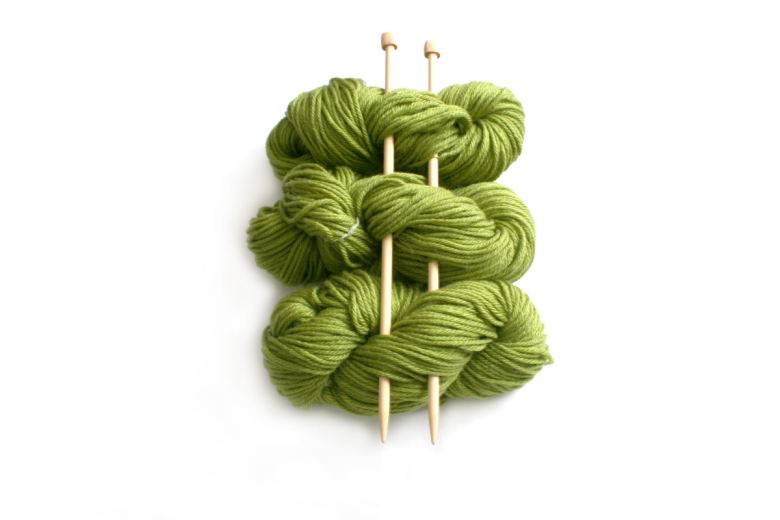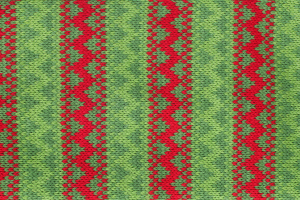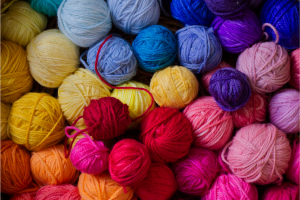In a world increasingly aware of sustainability, crafting with leftover materials has become a meaningful way to reduce waste and embrace eco-friendly practices. Knitting, a timeless craft enjoyed by many, offers the perfect opportunity to put this mindset into action. By using leftover yarns, knitters can create beautiful, functional pieces without the need for additional resources.
As we become more conscious of our environmental impact, repurposing leftover yarns allows crafters to take small yet impactful steps towards a greener future. Whether it’s scraps from a previous project or remnants of various yarns, these leftover materials can be transformed into something new and useful, instead of being discarded. This not only minimizes waste but also provides a creative outlet for knitters to explore new patterns and textures.
Moreover, working with leftover yarns can spark innovation in the crafting process. The challenge of using up every last bit of yarn can push knitters to think outside the box and experiment with different designs. From unique color combinations to mixing fibers, leftover yarns offer endless possibilities to create one-of-a-kind pieces that reflect both your skill and commitment to sustainability.
Incorporating leftover yarns into your knitting practice also encourages mindful crafting. It reminds us to be more intentional about the materials we use, making every stitch count. This shift towards eco-friendly practices not only helps the environment but also nurtures a deeper appreciation for the craft itself. By embracing the use of leftover materials, knitters can contribute to a more sustainable world, one stitch at a time.
The Importance of Avoiding Waste in Knitting
One of the key reasons to avoid waste in knitting is the environmental impact of producing new materials. The textile industry is a significant contributor to pollution and waste, and by repurposing yarn remnants, knitters can lessen their environmental footprint. Furthermore, choosing to reuse scraps instead of discarding them helps promote a more sustainable, mindful approach to crafting. Each leftover piece of yarn, no matter how small, holds the potential for a new project, making it not only a resource but also a valuable part of the creative process.
How to Creatively and Sustainably Use Yarn Scraps
Repurposing leftover yarn is not just about being environmentally conscious; it’s also an opportunity to showcase creativity. Knitting with scraps allows you to experiment with colors, textures, and patterns in ways that would not be possible with a single type of yarn. Whether it’s mixing contrasting shades in a patchwork blanket or using up small remnants for delicate accessories, there’s no limit to what you can create. Embracing this approach not only contributes to a more sustainable practice but also challenges knitters to innovate and develop their own unique designs.
In this article, we’ll explore how you can make the most of your leftover yarn, providing you with valuable tips, creative project ideas, and ways to integrate sustainability into your knitting routine. By the end, you’ll have a deeper understanding of how to craft with purpose, reduce waste, and create stunning pieces that tell a story of sustainability and creativity.
Why Save Yarn Scraps? Benefits and Sustainable Practices
Saving yarn scraps might seem unnecessary at first glance, but there are multiple benefits to keeping these leftover pieces. First, it’s an environmentally friendly choice that helps reduce waste in the crafting community. The textile industry is one of the largest polluters globally, and by repurposing yarn scraps, you contribute to a circular economy, where materials are used to their fullest potential. Additionally, reusing yarn leads to cost savings, as you don’t have to purchase new materials for every project. Saving scraps also provides a sense of satisfaction, knowing that no material goes to waste, and it nurtures a more mindful, sustainable crafting practice.
How to Organize and Store Yarn Scraps
Organization is key when it comes to managing yarn scraps. A well-organized storage system can help you easily find the yarn remnants you need, preventing them from piling up in a chaotic heap. Begin by sorting scraps by color, fiber type, or weight. Clear plastic bins or labeled storage bags are perfect for keeping your yarn tidy and visible, so you can quickly spot the perfect remnants for your next project. Another option is to wind scraps into small yarn balls or skeins, making them more manageable and less likely to become tangled. It’s also helpful to keep track of how much yarn you have left, so you can make more informed decisions about which projects to tackle.
Techniques and Projects to Use Yarn Scraps
There’s no shortage of creative techniques for using up your yarn scraps. One popular method is to create a scrap blanket, where you join various small yarn pieces together to create a patchwork effect. This not only helps use up scraps but also results in a cozy, colorful masterpiece. Another idea is to make mosaic knitting, a technique that allows you to combine different colors and textures in a visually stunning way. Color-blocked scarves, shawls, and socks are also great projects for using yarn remnants. Small items like baby clothes or home decor accessories, such as pillow covers or baskets, are ideal for using smaller amounts of yarn. The key is to get creative and think beyond traditional uses.
How to Choose Color and Texture Combinations for Your Projects
When knitting with yarn scraps, one of the most enjoyable parts is selecting which colors and textures to pair together. Choosing the right combination can transform a project from a collection of mismatched scraps into a cohesive and beautiful design. Start by experimenting with color gradients, where yarns in similar hues transition smoothly from light to dark, or create a bold contrast by pairing vibrant colors with neutrals. If you’re working with different yarn types or textures, like wool, cotton, or acrylic, think about how the fibers interact with each other. A combination of smooth, soft yarns with textured or bulky pieces can add depth and interest to a project. Don’t be afraid to mix and match—it’s all about personal style and creative expression.
Quick Accessories and Pieces to Make with Yarn Scraps
If you’re looking for quick projects to use up yarn scraps, there are several accessories that can be completed in no time. Headbands, mittens, and fingerless gloves are perfect for using small amounts of yarn and are functional items that make great gifts. You can also create keychains, coasters, or potholders—projects that are easy to customize and require minimal yarn. Tote bags made with colorful yarn remnants can be both practical and stylish. The best part is that these small projects allow you to experiment with different combinations of yarn without committing to a large-scale piece.
Common Challenges When Working with Yarn Scraps and How to Overcome Them
Working with yarn scraps comes with its own set of challenges. One common issue is dealing with yarn knots and tangles, especially if the scraps have been stored for a while. To avoid this, make sure to wind your scraps into small, manageable balls or skeins before storing them. Another challenge is the limited quantity of certain yarns, which can make it difficult to complete a project. To solve this, plan your designs around projects that require small amounts of yarn or combine different remnants to create something unique. Lastly, texture mismatches can occur when combining various types of yarn, but this can be addressed by incorporating techniques such as mixing yarns with different textures in a complementary way or using simple patterns that let the yarn shine.
Sustainability Tips: How to Minimize Waste While Creating
Minimizing waste in knitting isn’t just about saving scraps; it’s also about being mindful of your entire crafting process. Start by purchasing yarn in small amounts to avoid excess, and choose high-quality yarns that will last longer and produce less waste over time. Consider using eco-friendly yarns made from sustainable materials such as organic cotton, hemp, or recycled fibers. When working on larger projects, plan your yarn usage carefully to avoid unnecessary leftovers. Additionally, support brands and local artisans who prioritize sustainability in their practices. Finally, consider donating your leftover yarn to schools, charity knitting projects, or community centers to ensure it gets put to good use.
By implementing these sustainable practices and techniques, you can create beautiful, functional pieces while minimizing waste and contributing to a more eco-conscious crafting culture.
Transforming Yarn Scraps into Unique Creations: The Impact of Sustainable Projects
Repurposing yarn scraps not only helps reduce waste but also fosters creativity and sustainability in your knitting practice. By transforming what might seem like leftover materials into beautiful and functional pieces, you are contributing to a more eco-conscious approach to crafting. Each project made from yarn scraps tells a story of resourcefulness and innovation, and the results can often be more unique and special than using brand-new materials. Whether you’re creating a cozy blanket, a stylish accessory, or a decorative piece for your home, the beauty lies in how these fragments of yarn come together to form something entirely new.
Sustainable knitting practices help reduce the demand for new resources, supporting a circular economy and encouraging mindful consumption. This positive impact goes beyond just your own crafting space—it’s part of a larger movement towards reducing waste in the textile industry and promoting environmental awareness.
How to Make Knitting with Yarn Scraps a Regular Part of Your Projects
Incorporating yarn scraps into your knitting routine doesn’t have to be a one-time effort. By making it a regular part of your crafting process, you can continue to embrace sustainability while discovering new and exciting ways to create. Start by setting aside a dedicated space to store your scraps, organizing them by color, texture, or fiber type, which will make it easier to pull them out for future projects. You can also make it a habit to prioritize using scraps before purchasing new yarn, reducing your reliance on new materials.
Look for patterns and projects that encourage the use of leftovers, such as scrap blankets, colorwork projects, or modular designs that combine different yarns in a harmonious way. By seeking out or creating designs that celebrate the beauty of using various yarn remnants, you can inspire others to do the same and help cultivate a knitting culture that values sustainability.
The key to making knitting with yarn scraps a regular practice is to embrace it as part of your creative journey. Don’t be afraid to experiment and make mistakes—each leftover piece of yarn holds endless possibilities. By incorporating these practices into your routine, you’ll not only be creating beautiful items but also contributing to a more sustainable world, one stitch at a time.




